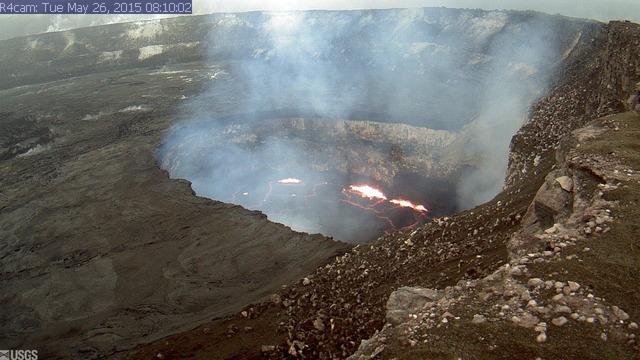Kilauea Volcano’s summit is showing signs of deflation, the U.S. Geological Survey Hawaiian Volcano Observatory reports. ADVERTISING Kilauea Volcano’s summit is showing signs of deflation, the U.S. Geological Survey Hawaiian Volcano Observatory reports. The minor deflationary tilt, which began around
Kilauea Volcano’s summit is showing signs of deflation, the U.S. Geological Survey Hawaiian Volcano Observatory reports.
The minor deflationary tilt, which began around 6 p.m. Sunday, continued Tuesday morning. During inflation, magma rises into the summit reservoir, according to the observatory. The summit reservoir enters the deflation portion of the cycle when the magma moves laterally into a rift zone, and either erupts or is stored there.
Scientists added that seismicity rates beneath Kilauea’s summit, upper East Rift Zone and Southwest Rift Zone have been at normal, background levels for the past day.
The tiltmeter, which is used to measure tiny changes in the slope angle or “tilt” of the ground, on the north flank of Puu Oo continues to show no significant change in tilt as of Tuesday morning.
Breakouts along the June 27 lava flow remained active within about 5.3 miles of Puu Oo, scientists said.
The U.S. Geological Survey Hawaiian Volcano Observatory on March 25 downgraded its alert level for Kilauea Volcano from a “warning” to a “watch.”




